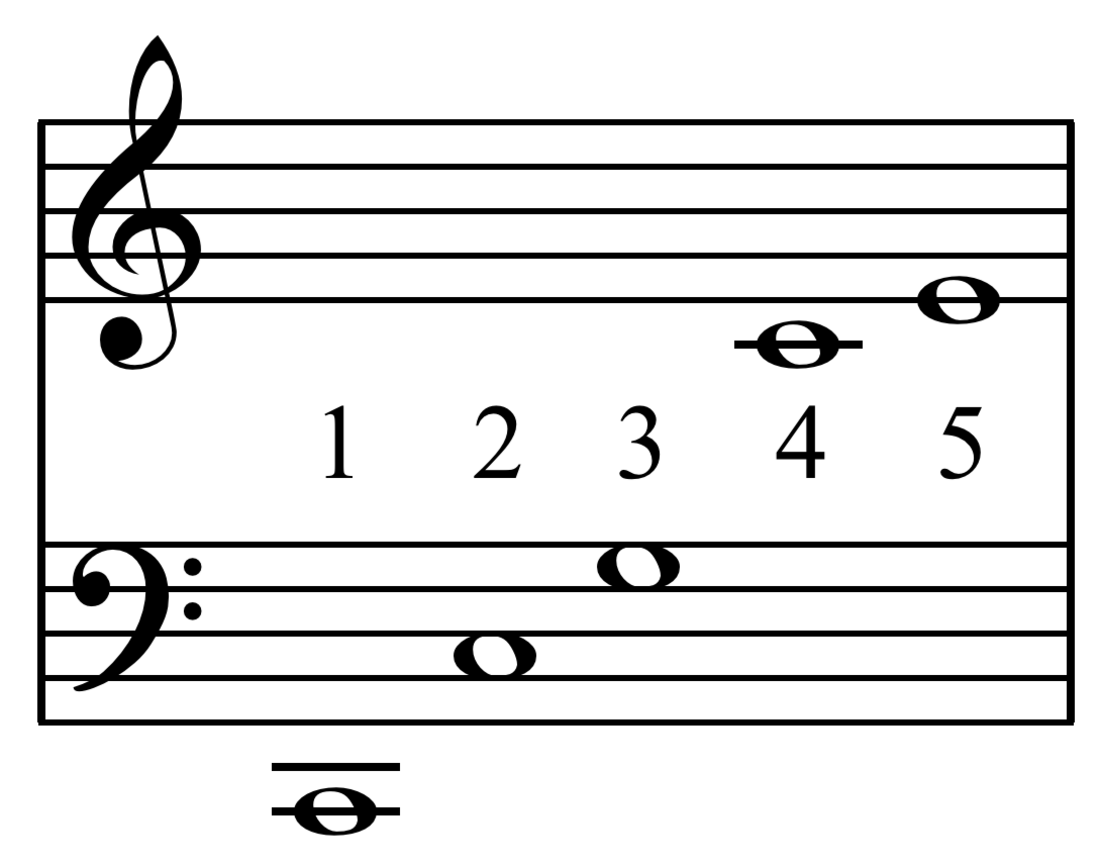Top Qs
Timeline
Chat
Perspective
Harmonic scale
From Wikipedia, the free encyclopedia
Remove ads
The harmonic scale is a "super-just" musical scale allowing extended just intonation, beyond 5-limit to the 19th harmonic (ⓘ), and free modulation through the use of synthesizers. Transpositions and tuning tables are controlled by the left hand on the appropriate note on a one-octave keyboard.[1]


For example, if the harmonic scale is tuned to a fundamental of C, then harmonics 16–32 are as follows:
Some harmonics are not included:[1] 23, 25, 29, & 31. The 21st is a natural seventh above G, but not a great interval above C, and the 27th is a just fifth above D. ⓘ

It was invented by Wendy Carlos and used on three pieces on her album Beauty in the Beast (1986): Just Imaginings, That's Just It, and Yusae-Aisae. Versions of the scale have also been used by Ezra Sims, Franz Richter Herf and Gosheven.[3]
Remove ads
Number of notes
Though described by Carlos as containing "144 [= 122] distinct pitches to the octave",[4] the twelve scales include 78 (= 12(12+1)/2) notes per octave.
Technically there should then be duplicates and thus 57 (= 78 − 21) pitches (21 = 6(6+1)/2). For example, a perfect fifth above G (D) is the major tone above C.
References
External links
Wikiwand - on
Seamless Wikipedia browsing. On steroids.
Remove ads
